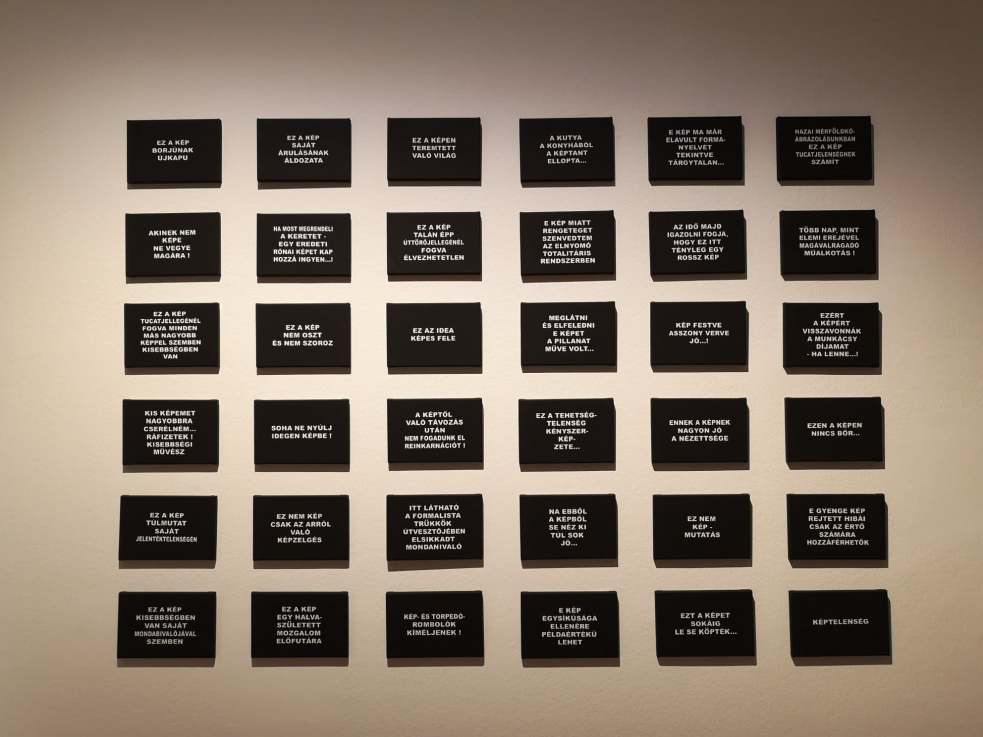RONAI’s art ranges from visual poetry, painting, mail art and copy art to installations, performances, photo, video and computer art, but these are mostly “just” tools in the service of a larger whole, an idea. It is the concept itself, i.e. the non-visual concept, for which it uses, recycles and appropriates almost anything, be it a philosophical, art-theoretical or political text, a simple gag or a pop-cultural banality. The 36 text panels in Without Pictures, which deal with the problem of the visual, allude to Joseph Kosuth’s formally similar but in its content very stark (serious) dictionary or citation pictures, but by mixing up the different levels of reality, Ronai overwrites them in a playful and ironic way. The twisted sayings and proverbs (e.g. he stares like a calf at a new gate), the rephrased quotations (Joseph Heller’s first sentence, “to see and to love”, from Catch-22) appear in unclear speech situations, i.e. it is difficult to decide who is speaking; the picture, the artist or the viewer/critic? The financial and aesthetic, art historical value of the picture (“unenjoyable”, “insignificant”, “bad”), the status of the work, the position of the artist(inferiority, need to conform), the perceived or real expectations of the spectator are all combined in a Dadaist matrix where the lack of pictures absurdly takes the shape of an image.
